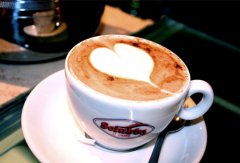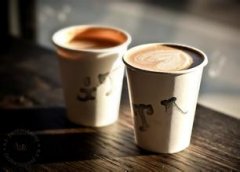General knowledge of boutique coffee culture Japanese coffee culture
The first coffee spread to Japan was Nagasaki in the Yuanlu period. And people officially accepted it from the Meiji era. Let's take a look at Japanese coffee culture.

At first, the Japanese were not used to the successive opening of coffee houses in Western Europe, when the literature and art of coffee culture were in bloom, while Japan was in the midst of the strict policy of locking up countries in the Edo era. Coffee, the first drink at that time, was set up at the Dutch store off the island of Nagasaki (1641) and presumed to have been brought in at that time. However, those who can get in touch with foreigners are servants (officials), businessmen, interpreters and tourist girls. Two or three interpreters of Zunberu's Journey to Japan recorded in 1776 finally knew the delicacy of coffee. "Coffee", which specially spread to the island to symbolize foreign culture, could not be popularized at that time.
The Japanese drink coffee by the writer of the crazy singer and opera in 1804. In the book Qiongpu and Qiongpu, the people of Shushan in Daejeon were invited to drink coffee on a red-haired ship. "Coffee is fried black and powdery, mixed with white sugar, and the bitter smell can not adapt to the bitter taste." Judging from the background in which coffee is imported from the island and is not widely accepted, the policy of locking up the country has indeed affected the Japanese people's unaccustomed to the taste of the new drink. Sisamert, who went to the Dutch residence on the island in Japan in 1823, seems to like coffee. In the book "Edo to visit the House", it is recorded that "when the Japanese get along with us, they like to drink coffee." The real popularity began in the middle of Meiji. Members of the founding literary magazine Hiroshi Kitahara, Woodpecker Ishikawa, Kwangtaro Takamura, Haruo Sato, and Hefeng Nagai meet each month at the "Hung Nest" venue in Hashimachi, Japan. In that shop, you can drink authentic French cuisine and foreign wine, and coffee is also authentic French deep-roasted coffee. The nest of Hong is like a social field for literati. From the Meiji era to the Taisho era, cultural salons like this did help create several coffee houses, and Japan finally entered the culture of coffee. However, it is still a rare shop for ordinary people.
The coffee salon formed at that time was a social place for literati or literary youth, but at the same time affordable coffee houses were popular unwittingly. In the heyday of the Taisho era, there were more than 20 branches across the country. Why is the coffee salon so popular? Because the coffee in the high-end western restaurant cost 15 yuan at that time, while imitating the coffee shop in Paris or New York, a cup of low-priced coffee with 5 yuan was thoroughly implemented. So you can have authentic and fragrant Brazilian coffee at a price of 1/3.
In the national well-known coffee salon, it is hard to count the Japanese who have tasted delicious coffee. Coffee salon has left an indelible contribution to popular coffee. In the Taisho era, the number of coffee lovers did increase a lot, and it became more popular in the Showa era, but World War II stopped importing coffee because it was an "enemy drink." In Japanese life, coffee disappeared for a moment. Coffee is appreciated and loved by people as "messengers of peace". At present, the competition in the Japanese coffee market is very fierce. Including tea shop and family coffee and instant coffee, home coffee and office coffee, all kinds of canned coffee, plus hospitality coffee, delicious coffee and so on. In particular, the more authentic demand for coffee in the Pyeongcheng era has also increased.
Important Notice :
前街咖啡 FrontStreet Coffee has moved to new addredd:
FrontStreet Coffee Address: 315,Donghua East Road,GuangZhou
Tel:020 38364473
- Prev

The History and Culture of fancy Coffee the Origin of Cappuccino
Fanz George Kolschitsky is the founder of Cafe Latte with Milk and Coffee. In this issue, we will talk about the origin of Cappuccino. Both drinks are made from coffee and milk, but cappuccino has a more knowledgeable origin and has always been the best material for the study of character changes in Europe and the United States. The history of the word Cappuccino is enough to show that a word often
- Next

The basic knowledge of Fine Coffee Culture Coffee Culture in Vienna
Coffee is something that Viennese enjoy talking about and are quite proud of. The Viennese even compare it with music and waltz, which is called the three treasures of Vienna. this shows the relationship between Viennese and coffee and the coffee culture of Vienna. Some people say that Vienna is a five-step coffee, which may be an exaggeration by the poet, but it is true that there are a large number of Vienna cafes. For people from street corners
Related
- How did the Salvadoran coffee industry develop in Central America?
- What exactly does the golden cup extraction of coffee mean?
- The Origin of Coffee flower
- [2023 Starbucks World Earth Day] there are more meaningful things besides free Starbucks coffee!
- What kind of coffee is there in Spain? 9 Flavors of Spanish Coffee
- Aromatic African coffee| Kenya's coffee culture and historical production area
- Liberica Coffee Bean knowledge: the characteristics of Liberian Coffee beans of the three original species of Coffee beans
- The origin and formula of Spanish latte introduces the taste characteristics of Bombon coffee in Valencia, Spain.
- How to adjust the solution of over-extracted coffee
- What is the tasting period of coffee beans? What is the period of coffee and beans? How should coffee wake up and raise beans?

